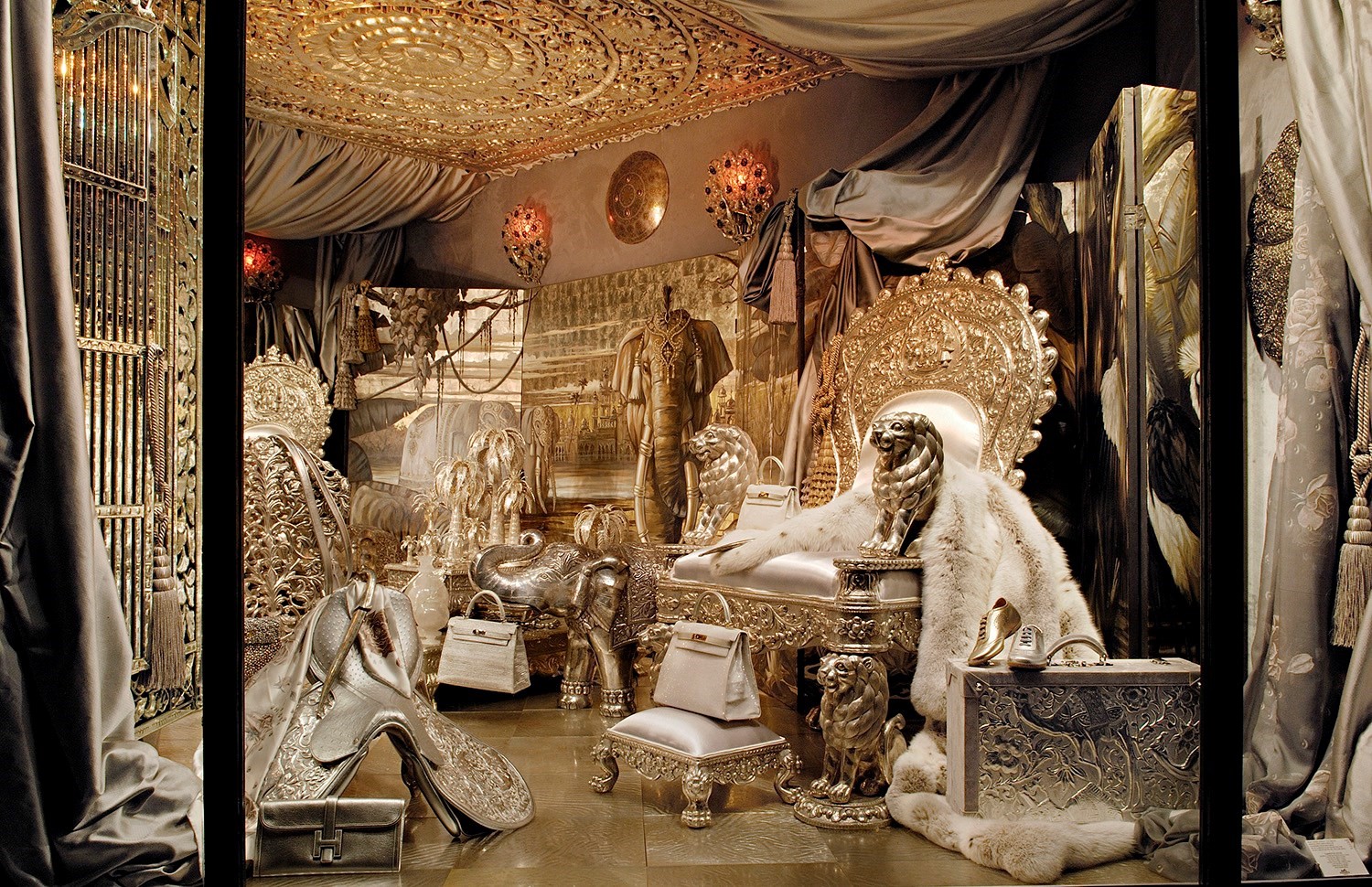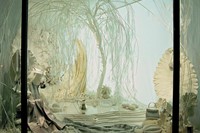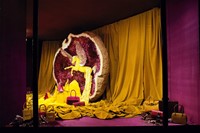The windows of a fashion boutique are, for many, a fantasy. And not only to those who can’t afford to wear the wares on show. Their primary role is to present a scene concocted from props and products, to pull in the observer, to make them dream – and, possibly, to sell them something at the same time. The latter was, however, never an overt concern of Leïla Menchari, the 90-year-old doyenne of the vitrine – or “Queen of enchantment”, to borrow the parlance of her former employer, the French luxury house Hermès.
Menchari was responsible for the eye-catching (and frequently traffic-stopping) windows of Hermès’ Rue du Faubourg Saint-Honoré flagship from 1978 to 2013. During that period, she concocted elaborate fantasies – 136, in total – that included aluminium stallions, mother-of-pearl Moroccan souks and undersea grottoes, complete with shell-encrusted urns and torsos and subterranean cobwebs of glistening thread. All of her windows contained oddly co-ordinating Hermès pieces – hammered steel Kelly bags for her Trojan horse; clutches in iridescent sea-foam green crocodile for her grotto; fretwork lace Birkins for her Alhambra. But rather than theme her creations around product, the product was specially crafted to her exacting and specific requirements. Nothing in her Hermès windows were for sale: and when the scheme’s span was complete, they were placed in secretive storage.
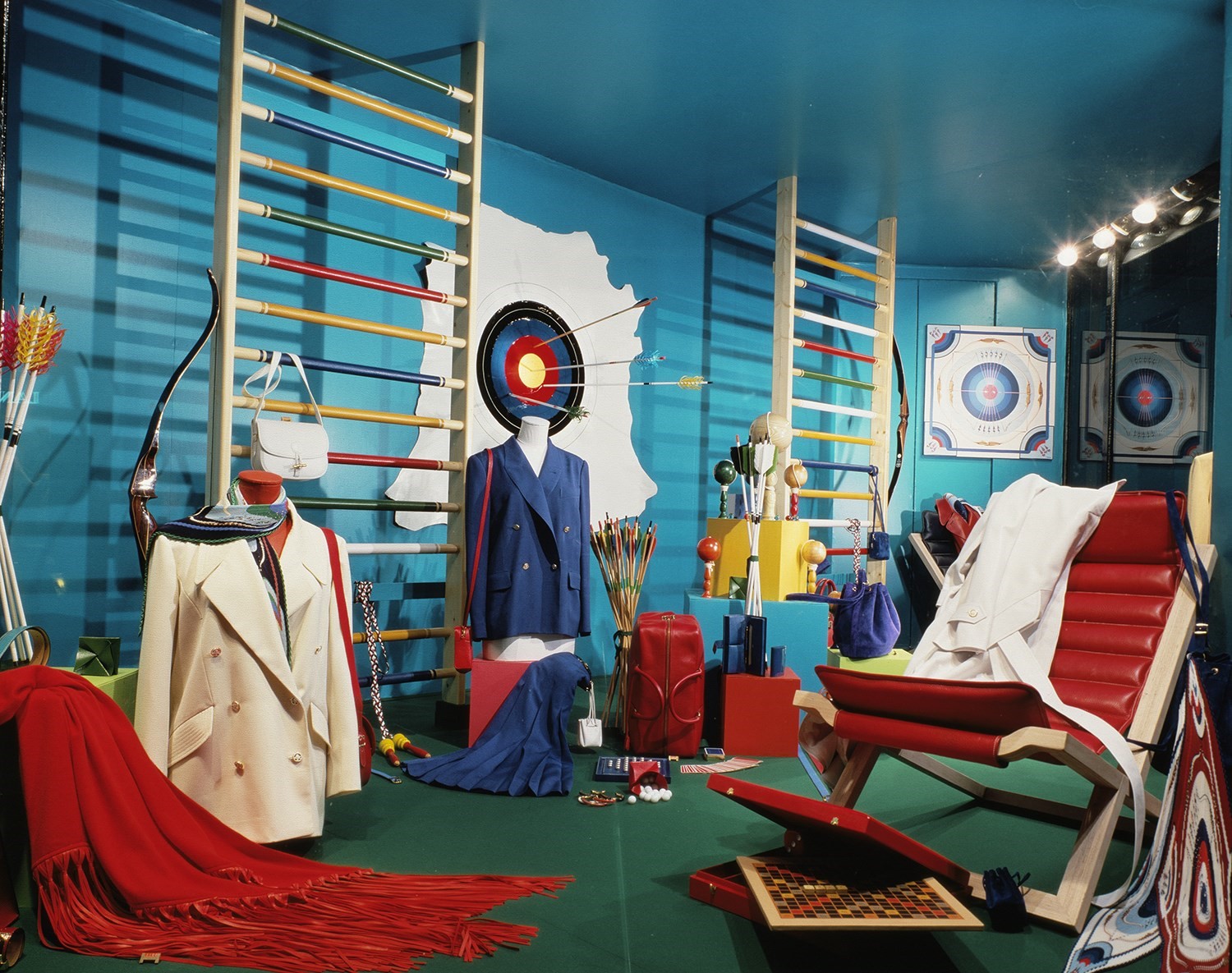
Currently, however, a section of her greatest hits (including the above mentioned examples, and a clutch of others) are enjoying a second life – exhumed for an exhibition at the Grand Palais coinciding with Paris Photo. Which is apt, given how photogenic each of the creations are. The title – Hermès à Tire-d’Aile – ‘Hermès at a Glance’ – is something of a pun. It not only took weeks to create these painstaking, fantastical vistas for the Hermès vitrines, but requires more than a glance to dissect their intricate surfaces, and explore their visuals in depth. The windows are recreated exactly as-was, bar the fact that the angle of their depth is slightly less acute than that of the Hermès corner window (the main stage for Menchari’s spectacles) where the Rue du Faubourg Saint-Honoré meets the Rue Boissy d’Anglas.
“It not only took weeks to create these painstaking, fantastical vistas for the Hermès vitrines, but requires more than a glance to dissect their intricate surfaces, and explore their visuals in depth” – Alexander Fury
Born in Tunisia to a well-to-do family (her mother introduced fellow countryman Azzedine Alaïa to the world of Parisian couture, helping secure his first job at Christian Dior in 1957) Leïla Menchari studied at the École des Beaux-Arts in Tunis before coming to Paris to pursue an artistic career. A relatively new arrival to the city, she showed her drawings to Annie Beaumel, then-head of Hermès’ windows, in 1961 – and was hired on the spot.
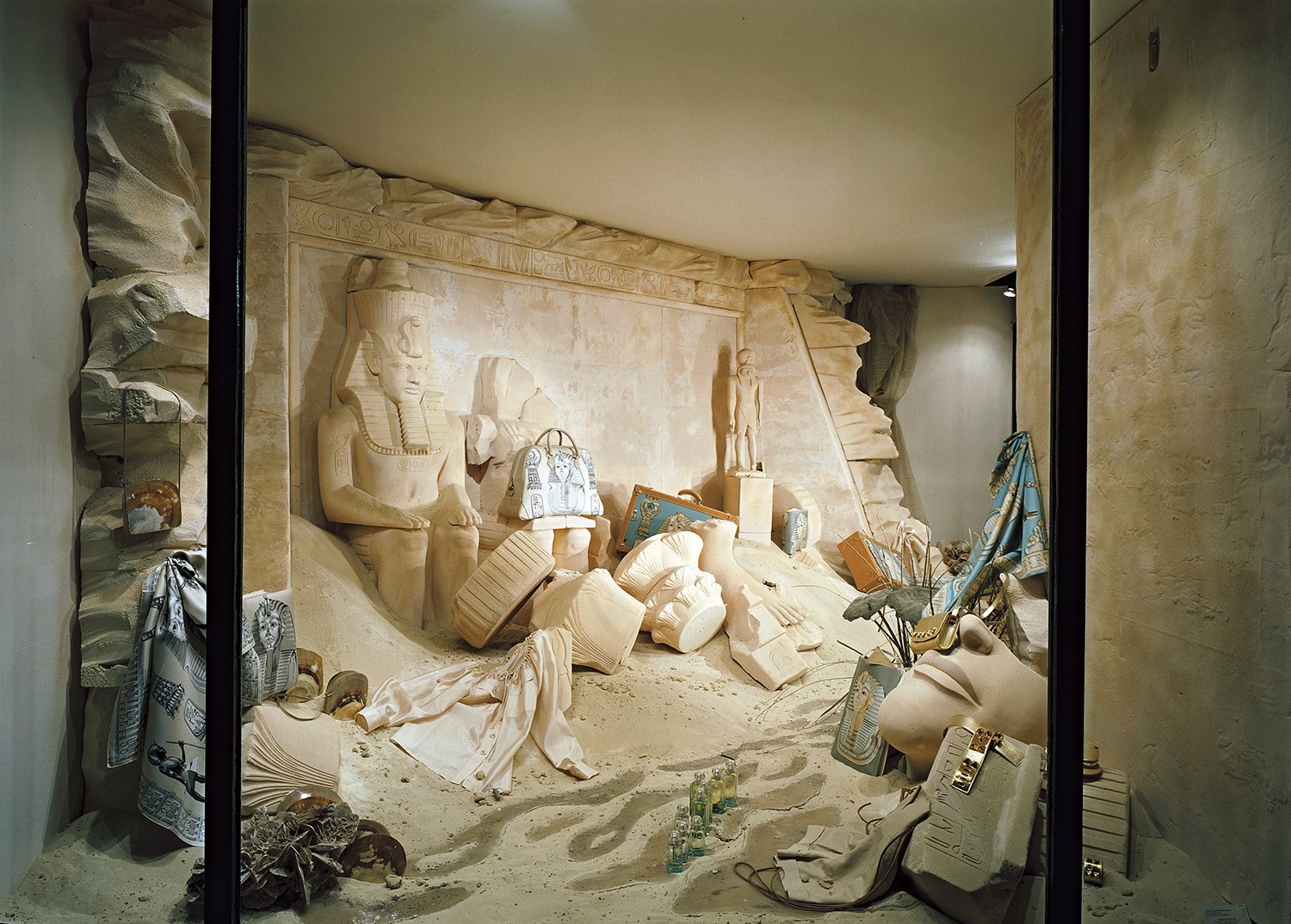
Menchari was not the first to create spectacular windows, nor the first to feature not a scrap of saleable product. Cristobal Balenciaga hired the sculptor Janine Janet to create arresting assemblages for his couture maison on Avenue Georges V with the strict stipulation that no product could be shown. But Menchari has pushed the boat even further – if Janet created arty assemblages, Menchari manufactured all-encompassing worlds (the subtitle of the exhibition, incidentally, is Les Mondes de Leïla Menchari). And her approach of window display as enticing feast has been much-emulated. “Leïla is a master, who has raised her discipline to a level of art,” said Pierre-Alexis Dumas, artistic director of Hermès, in conversation with Menchari at the exhibition’s opening on Tuesday evening. “There are many emulations at different houses. I see this as an encouragement to go further.” “Windows are exhibitions,” said Menchari. “But the objects that we put in the window each play a role. You’re in a small theatre, where each role must be played well.”
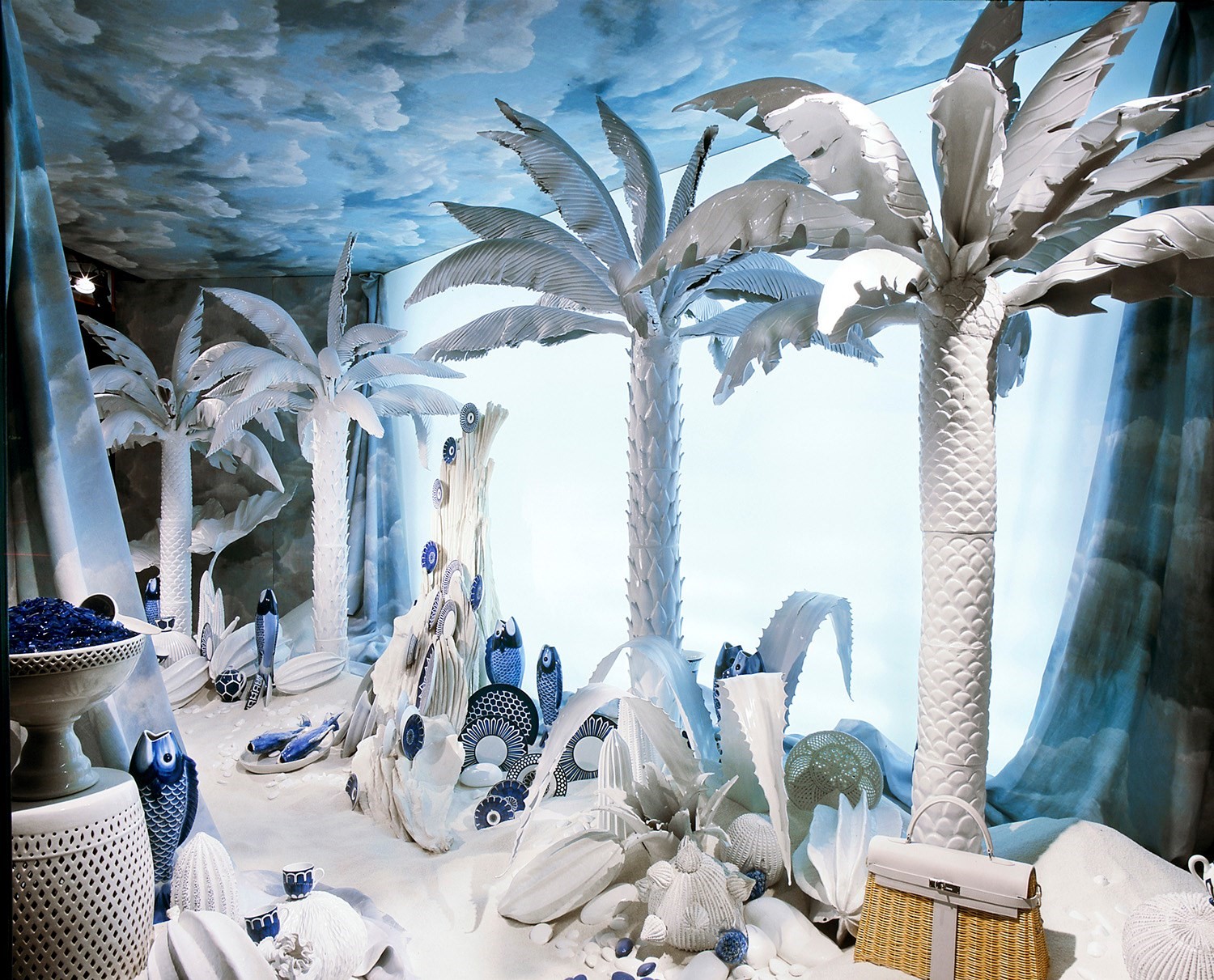
Hermès à Tire-d’Aile: Les Mondes de Leïla Menchari is at the Grand Palais, Paris, from November 8 until December 3, 2017.
